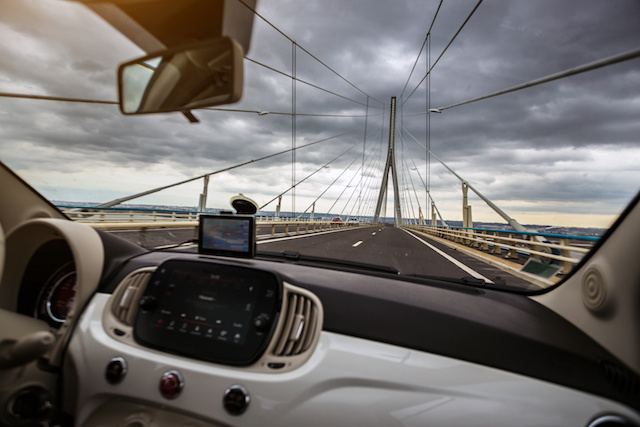Expats’ Guide to Driving on France’s Autoroutes

Part of moving to France is getting to grips with different driving conditions and rules. Driving is on the right-hand-side of the road in France. However, if you buy a French car, it will have the steering wheel on the left-hand side of the car, which makes it much easier to adapt to driving on the “wrong” side of the road.
Learning New Motoring Terminology
One of the first things you will need to master when moving to France is the motoring terminology. Petrol is gasoline. The cheapest places to fill up are at supermarkets and the most expensive are autoroute service stations. The difference can be as much as 15 centimes per litre, (around 70c per gallon), so it pays to shop around.
Diesel is gasoil or gazole and is considerably cheaper than unleaded. Don’t be misled by the colours at the pump. Diesel pumps may be yellow or black while green is reserved for eco-friendly unleaded.
Some garages are self-service, some still have an attendant and some require you to prepay the cashier before you can fill up. At some service stations you fill up and then drive to the central kiosk to pay the attendant.
Using Autoroutes when Driving in France
There are many other things you need to be aware of when moving to France. Motorways are called autoroutes, and they are prefixed with the letter A. Most of these are toll roads, so look out for the word péage on the signs. Usually you will need to stop at a barrier and pick up a ticket before you can enter the autoroute. At your chosen exit, relinquish your ticket and make the required payment.
It can be by cash into a hopper, by credit or debit card, or at a manned booth. You may also come across additional tolls at fixed points, often when navigating around busy cities. If you regularly use a toll road, you may find a transponder (Sanef toll tag) useful. You can then use the nonstop telepéage lane marked with a yellow “t” which automatically charges your account.
Routes starting with the letter N denotes the National Network of major trunk roads. Smaller roads have a D before the number, which stands for Département-maintained roads. These are usual local routes or country roads. Major routes may have a second number in green, which starts with an E for European route. The very quietest back roads (and incidentally the most scenic) are the Routes bis.
You may find roads regularly change their letter and number, often adopting a new number when they enter a different department, leaving poor motorists totally bewildered. It is safer to follow major towns rather than numbers for directions, or follow an E route for consistency.
New Speed Limits in France
One final note for those moving to France. From July 1,2018 the new national speed limit in ordinary roads (not dual carriageways or autoroutes) will be reduced from 90km/hr to 80km/hr. Laws are also much tighter regarding use of mobile phones while driving. If caught, you may have your driver’s license suspended immediately, so don’t be tempted.
If you’re moving to France, find out how our international removals team can help to arrange packing, storage and transportation on your behalf.



